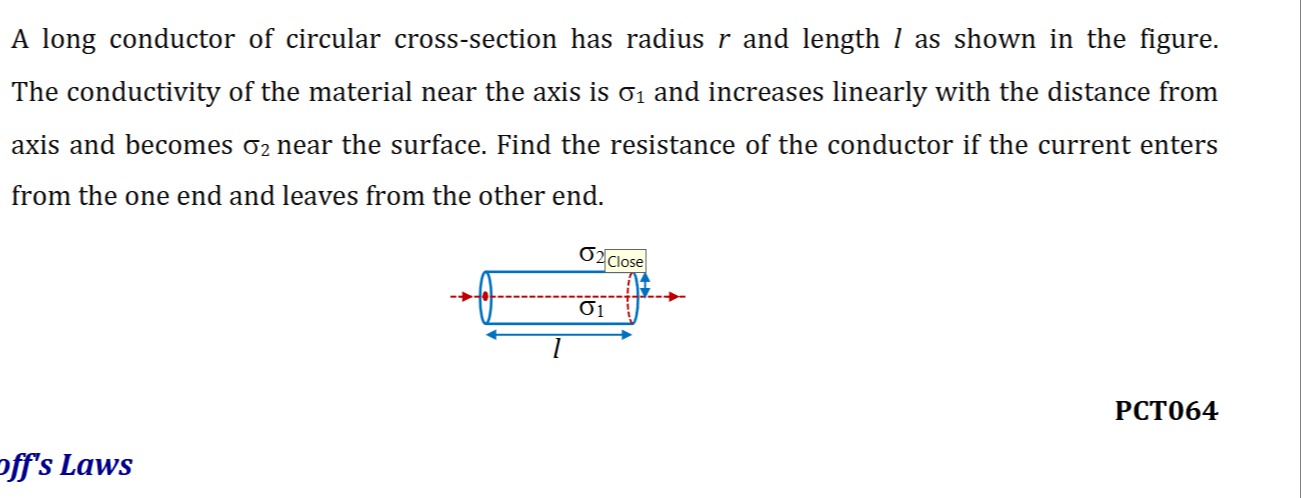Question
Question: A long conductor of circular cross-section has radius $r$ and length $l$ as shown in the figure. The...
A long conductor of circular cross-section has radius r and length l as shown in the figure. The conductivity of the material near the axis is σ1 and increases linearly with the distance from axis and becomes σ2 near the surface. Find the resistance of the conductor if the current enters from the one end and leaves from the other end.

The resistance of the conductor is πr2(σ1+2σ2)3l.
Solution
The resistance of a conductor with non-uniform conductivity can be found by considering the total current flowing through it under a uniform electric field along the direction of current flow. The conductivity σ varies linearly with the radial distance x from the axis, from σ1 at the axis (x=0) to σ2 at the surface (x=r). This can be expressed as: σ(x)=σ1+rσ2−σ1x
The current enters from one end and leaves from the other, meaning the current flows along the length l of the conductor. The electric field E is uniform along the length, so E=V/l, where V is the potential difference across the conductor.
The current density J(x) at a radial distance x is given by J(x)=σ(x)E. The infinitesimal cross-sectional area of a cylindrical shell at radius x with thickness dx is dA=2πxdx.
The total current I flowing through the conductor is the integral of the current density over the entire cross-sectional area: I=∫0rJ(x)dA=∫0rσ(x)E(2πxdx) Substituting the expression for σ(x) and E=V/l: I=∫0r(σ1+rσ2−σ1x)lV(2πxdx) I=l2πV∫0r(σ1x+rσ2−σ1x2)dx Evaluating the integral: I=l2πV[σ12x2+rσ2−σ13x3]0r I=l2πV(2σ1r2+rσ2−σ13r3) I=l2πVr2(2σ1+3σ2−σ1) I=l2πVr2(63σ1+2σ2−2σ1) I=l2πVr2(6σ1+2σ2) I=3lπVr2(σ1+2σ2)
The resistance R of the conductor is given by R=V/I. R=3lπVr2(σ1+2σ2)V R=πr2(σ1+2σ2)3l
